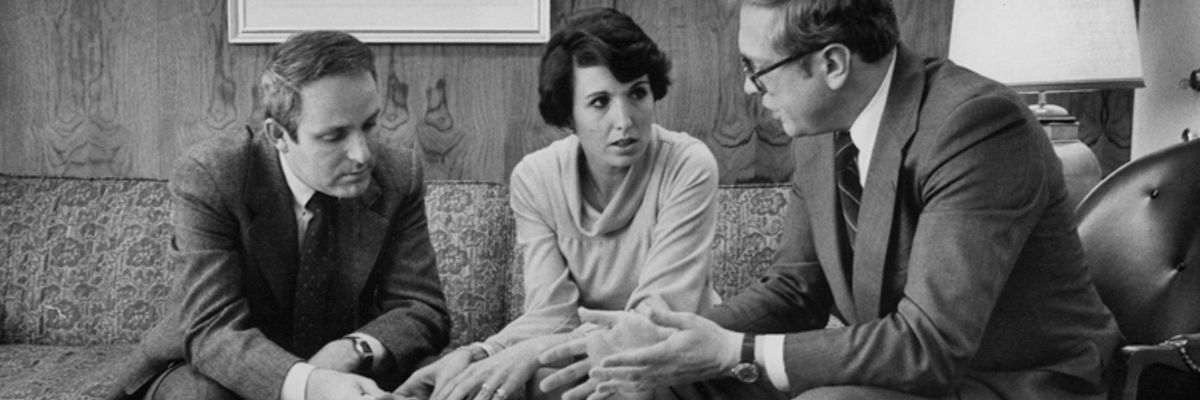
Reconstructing Fixed & Active: The Birth and Evolution of Active Bond Management
In the 1960s, inflation significantly drove down the value of bonds, leaving bond investors in trouble. MFS decided to build an active fixed income department to meet investor needs and provide another path to long-term value.
In the 1960s, inflation drove down the “real price” value of bonds by some 36%, leaving bond investors in trouble.1 The old strategy of buying bonds, holding them to maturity and physically clipping the coupons for cash payments no longer gave investors the value they needed.
By then, MFS® had several decades of active management experience in equities. So, rather than watch investor outcomes be jeopardized, the firm decided to use the same ideas — thoughtful research and trading securities — to create better long-term value for fixed income investors. MFS decided to build an active fixed income department to solve the problem that traditional bonds had become and directly address investor needs.
Though actively trading bonds wasn’t common practice at the time, MFS hired Keith Brodkin, a charismatic Bostonian, who had proven active fixed income expertise and was well known for his keen ability to swap one bond and buy another,2 saying that often “people are afraid of the risks that create opportunity.” Brodkin’s mindset was precisely what MFS needed, and the firm convinced him to join MFS in 1970 as an investment officer, specializing in fixed income securities.

So, rather than watch investor outcomes be jeopardized, the firm decided to use the same ideas — thoughtful research and trading securities — to create better long-term value for fixed income investors.

By 1972, he was given the green light to develop and manage the firm’s new fixed income department and quickly hired Patricia Zlotin to join him. Women executives were considered novel at the time, but as Zlotin recalled in 2023, “MFS always focused on talent.” The team quickly proved the value of the fixed income department and how MFS could differentiate itself from rest of the industry. Instead of remaining behind closed office doors, they met institutional investors face-to-face to help them fully understand MFS’ approach. They demonstrated how money could be made by trading a major telephone company bond for a major airline company bond.
These meetings gave MFS a chance to show bond investors the real value of active management, and investors caught on. By 1974, Brodkin was managing the bond portion of the MFS Total Return Fund and overseeing the MFS Bond Fund (now called the MFS Corporate Bond Fund).3 Two years later, MFS launched the Managed Municipal Bond Trust, one of the United States’ first national municipal bond funds. MFS expanded the firm’s fixed income offerings even further by going global and establishing the Massachusetts Financial International Trust Bond Portfolio in 1981, which invested in global sovereign bonds and was the first global fixed income mutual fund in the US. Richard B. Bailey, then president of MFS, said the portfolio, an industry transformer, was designed “to provide an alternative to fixed-income investors who are locked into one national economic environment characterized by sharply increasing interest rates and falling bond prices.”4 MFS continued pioneering innovative fixed income products in the 1980s and 1990s, showing that what was top of mind for investors was also top of mind for MFS.
Beginning after a prolonged period of financial uncertainty in the late 1960s, the active fixed income revolution that started in a little office in Boston altered the industry and gave clients and investors another path to long-term value.
Please note: Not all of the funds included in this material may be available for sale in your country.
Endnotes
2A. Keith Brodkin, 62, Mutual Fund Chief (6 February 1998). New York Times. https://www.nytimes.com/1998/02/06/business/a-keith-brodkin-62-mutual-fund-chief.html
3https://www.nytimes.com/1998/02/06/business/a-keith-brodkin-62-mutual-fund-chief.html and FORM N-1A: MFS® SERIES TRUST IX. Securities and Exchange Commission (https://www.sec.gov/Archives/edgar/data/63075/000110465919047392/a19-16776_1485bpos.htm).
4Werner, R. (1995, December 18). MFS Bond Portfolio Excels in the Long Run. Fort Lauderdale Sun Sentinel.